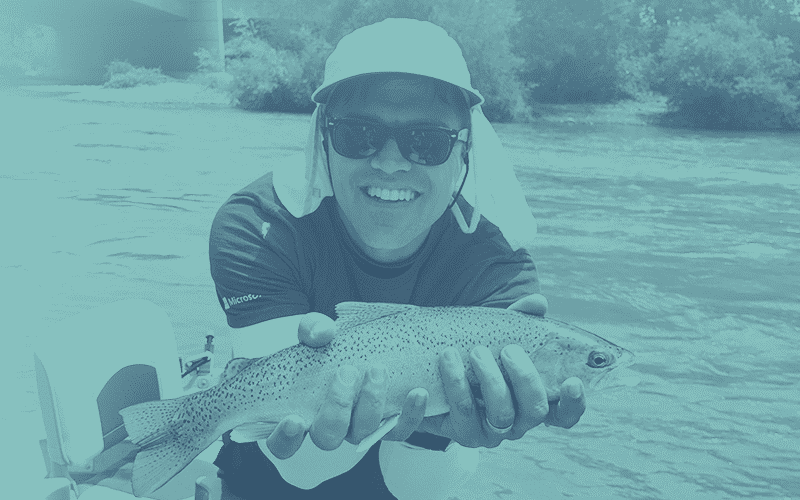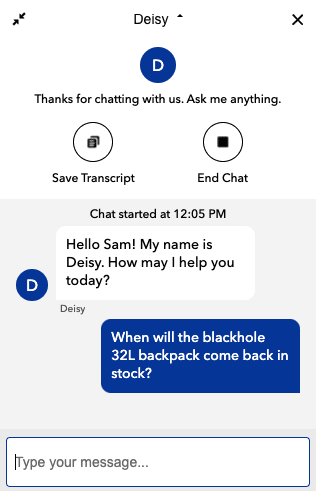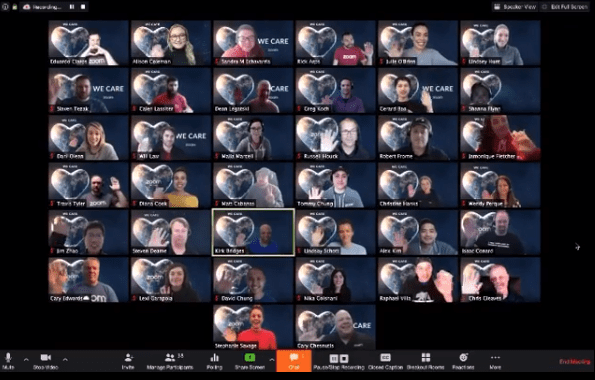The COVID-19 Question: Can Digital Experiences Replace Real-life Experiences?
Five ways to build trust, improve transparency, and increase retention with digital experiences.

We need both types of experience together. Here are five ways we can do that.
As I work from home to help “flatten the curve”, I’ve already received countless “What we’re doing about COVID-19” emails. Some of these came from companies that I’ve never heard of, and I’ve been keeping a sharp eye out for anyone trying to take advantage of this moment to score some quick points with people who are frightened about a global economic downturn, about becoming ill, or about losing a loved one.
But my inbox is filled with ten doves for every one of those vultures. Many companies (like Lucidworks) are looking closely at what we offer and at how we can use our products and services to help our customers persevere.
Here’s a small sample of notifications from my inbox, companies I love who have reached out to me about the virus. These organizations provide mostly non-digital, in person experiences:

- Amigos de las Americas, a beloved summer-abroad volunteer organization that I grew up with, announcing that it was suspending all of its 2020 summer programs,
- Freight House, a delicious, friendly, farm-to-table restaurant in Paducah, Kentucky where my son and I ate dinner during a recent road trip, and
- AC Fly Fishing, a guide service on California’s Sacramento River.

My experiences using these organizations.
Their digital outreach must come with existential fear. These organizations count on people going out, and my family and I will be mostly inside for the foreseeable future. During that time, I will give thanks for the real-life experiences and memories that these organizations created. But at the same time I worry for their employees, partners and providers. We yearn for those hand-shaking, hugging, toasting moments ten times more when we cannot have them. But how many elbow-to-elbow human experiences can be replaced by the digital experiences that carry no risk of virus transmission?
Last week, Sheryl Kingstone, vice president and general manager, customer experience and eCommerce, 451 Research, now a part of S&P Global Market Intelligence, looked into the same question, in her research note titled, “Digital experiences are front and center in coping with coronavirus.” Kingstone’s thesis is that “the future of digital experiences must focus on building trust, transparency and retention.” She recommends five steps that companies should take to make this happen:
- Measure digital performance
- Use this moment as a catalyst for digital improvements
- Use virtual assistants to ease capacity issues
- Focus on retention by moving to subscriptions
- Make sure you can take mobile orders and deliveries
At Lucidworks, we specialize in connected digital experiences that personalize every step of the customer journey. I offer this guidance based on what we’ve learned, to help adjust to how the world is now changing. At Lucidworks, we have always seen our products and services as catalysts to the connected experiences that maximize the value of data discovery. Those capabilities are now more important to businesses, nonprofits and government agencies.
Measure Digital Performance
Kingstone tells us that “it’s important to bring experiences to life online for deeper engagement to make people feel as connected as in-person experiences.” The three organizations I mention above have spent years–in one case decades–creating their unique in-person experiences. When the pandemic subsides, I and millions like me will rush back into the world, to satisfy our pent up needs to volunteer, dine out or float on rivers, and we will begin making those plans digitally, before it’s safe to venture out.
How will organizations know if they are making the right offers to the right consumers? How will they feel confident that their digital channels are ready to convert our pent-up interest into real-life business?
We offer our Predictive Merchandiser application, running on our Lucidworks Fusion platform, to help ecommerce merchandisers with that challenge. It empowers merchandisers to instantly adjust how they present their products and services–without having to create IT tickets. They can watch the digital signals their customers send while they make stay-at-home orders, and prepare for winning their business once they can go out again. Read more about actionable ecommerce metrics in Garret Schwegler’s follow-on post.
Use This Moment as a Catalyst
451 Research estimates that the opportunity for improving digital experiences is worth at least $500 billion in revenue in the US alone, “ranging from personalization improvements to mitigating abandoned shopping carts and other customer friction points.” Kingstone goes further with this advice:
“As businesses look to create more hyper-personalized experiences, the most meaningful…experiences will be informed by data-driven context clues, which will only increase in number as the amount of available data – especially unstructured data – proliferates. This will continue to accelerate with the growth of new types of connected devices capturing unprecedented volumes of behavioral data.”
We are partnering with our clients to adapt to COVID-19’s economic impact and to grow again in its aftermath. Their customers and prospects send digital signals to them every day about what they want. Fusion helps them capture those behavioral signals to continuously deliver the most relevant results as usage patterns evolve. With a combination of machine learning models and analytical reporting, digital merchandisers can meet this moment with new products and go-to-market strategies. My colleague Trey Grainger wrote a great post on understanding intent to personalize digital experiences.
Use Digital Assistants to Ease Capacity Issues
According to 451 Research, forty-seven percent of consumers would prefer to use a virtual assistant if it saved them time. Kingstone writes, “The purpose of self-service is twofold: first, to provide customers with easy access to information when it is most relevant to them, and second, to deflect as many service interactions as possible away from expensive live-agented help and toward automated systems.” Both customer retention and cost control are particularly important right now.
Right now, most of us would much rather use our time connecting digitally with our friends and family members–not waiting on a contact center’s phone queue. As contact volumes spike, good virtual assistants can provide a more human experience answering frequently asked questions. As one example, we hear from national health services around the globe that their legacy FAQ systems are not up to the task. Even if the site has answers for frightened citizens, they have to be retrievable when users type in free-text questions with varied spelling, wording, and idioms. These variations share the same context and need the same answers.

Citizens who get null results to a question are likely to assume that their health agency does not have the answer (even when they do). Or they pick up the phone and further tax overused call centers. Providing answers via digital assistants frees public health professionals and support teams to answer complex or new questions that overwhelm old-fashioned FAQ systems.
Smart Answers is Lucidworks’ question-answering system that understands the intent of natural language questions (e.g. “Does hand sanitizer kill viruses?”) and matches that intent with the best answer. Smart Answers’ deep learning technology continuously adjusts to the changing ways people actually ask questions. It’s able to teach itself how to answer more questions automatically and give contact centers relief during moments of peak demand. Read more from Radu Miclaus on the importance of semantic search for user self-service.
Focus on Retention by Moving to Subscriptions
Subscriptions aren’t just for magazines any more. Kingstone’s report states that, “With the increasing prevalence of the subscription economy changing the long-term economics and relationships between brands, retailers and consumers, new approaches to engagement models will emphasize loyalty-building and retention exercises.”

Lucidworks followed this same logic when we built Lucidworks Managed Search, which is a managed service of Apache Solr in the cloud. Lucidworks Managed Search is built for companies who manage their own home-grown Solr clusters. Our service frees them from the operational burden of maintaining their own Solr environment. Lucidworks employs many of the original Solr architects and many of its current code committers. Contact us if you would like to join the incubation program for Lucidworks Managed Search.
Make Sure You Can Take Mobile Orders and Deliveries
 Kingstone’s fifth suggestion is especially apt for restaurants: “With 64% of millennials already frequently using mobile order ahead compared with only 8% of the over-65 population, expect adoption of new digital-native services to dramatically alter the way people experience things in 2020 – even for the digitally delayed.”
Kingstone’s fifth suggestion is especially apt for restaurants: “With 64% of millennials already frequently using mobile order ahead compared with only 8% of the over-65 population, expect adoption of new digital-native services to dramatically alter the way people experience things in 2020 – even for the digitally delayed.”
Lucidworks CEO, Will Hayes, discussed this capability in his recent blog post: “Lucidworks For Digital Commerce: New Decade, Sharper Focus”. Will shared how our Fusion platform predicts shopper intent and then uses that intelligence to personalize each shopper’s digital experience. Location is one of the many signal types that machine learning can use to personalize search results. When our Fusion clients know where their customers are when they order products for delivery or seek medical advice, they can tailor results best suited to that location. This keeps consumers and delivery people informed and safe, as more mobile orders come in during COVID-19 shelter-in-place.
Moving Forward Together, Digitally and Otherwise

To digital or not to digital? That is not the question. We already move between both types of experience every day, and once this pandemic ebbs we will be hungry for whatever experiences we’ve put on hold. It’s during tough times like these that I rely on the friendships I formed while volunteering in Latin America with Amigos de las Americas. I try to recall the savory goodness of the crawfish pot pie at that restaurant in Paducah. I look out my window and wish I were floating on a river somewhere, waiting for an early morning trout to rise to my fly. Until then, let’s prepare for all the experiences we want after we are done sheltering in place.
LEARN MORE
Contact us today to learn how Lucidworks can help your team create powerful search and discovery applications for your customers and employees.